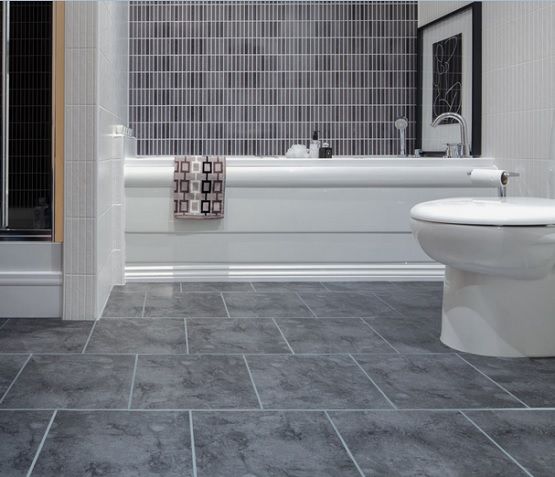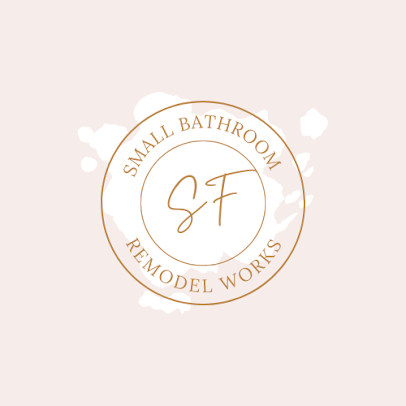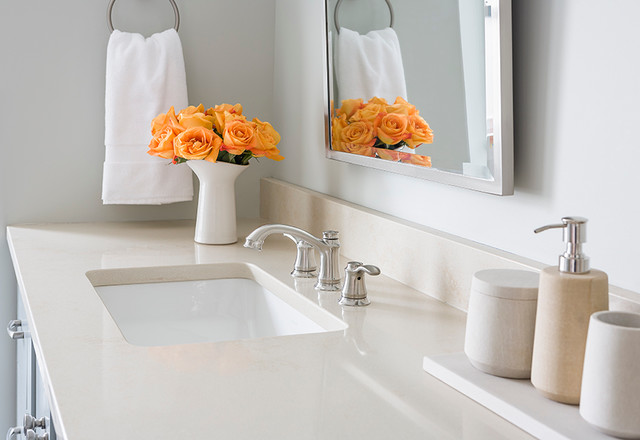This is an excerpt from the Book called “Creative Homeowner Affordable Bathroom” continue reading to learn more about Bathroom Flooring, thanks to the author
Flooring
A bathroom floor needs to repel water effectively, but fortunately that doesn’t limit design options. As the following four pages show, there are plenty of beautiful products from which to choose. This chapter concentrates on the most popular tile and sheet products. A motivated homeowner can install any of these products using inexpensive tools. (For cutting hard tile or stone, you will likely need to rent a wet-cutting tile saw). Look through the projects to get an idea of the work involved. Bathroom floors are usually small, which limits the heavy lifting.
If you have a weak back, however, you may want to hire a contractor to avoid the possibility of straining it from repetitive kneeling down and getting up. If you are removing your flooring to install new flooring, you may want to take the opportunity to install radiant floor heat. Your new floor will be as comfortable as it is pretty!
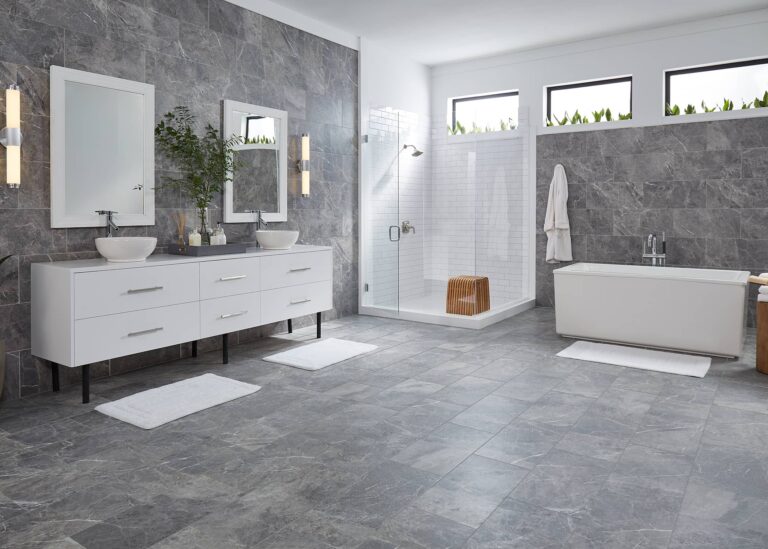
Flooring Options
Unless it is only lightly used, expect your bathroom floor to get wet on a regular basis. The flooring you install should effectively resist water; it should be easy to clear; and it should be skid resistant. There are numerous products that meet these criteria. These four pages show some of the most popular.
Plan the floor along with the wall. Many people like the seamless look created by floor and wall tiles of the same or similar materials. If your walls will be painted, take a sample tile in with you to choose a paint that picks up one of its colors or contrasts with it pleasantly.
Before you shop, measure your bathroom and make a scale drawing to show to a flooring salesperson; this will make it easy to select the right amount of materials. as well as the installation instructions for your kind of flooring to choose the right subsurface materials so that the new flooring will rest on a solid-enough surface and will not be more than ½ inch higher than any adjacent flooring surface.
These days, some brave souls install wood, bamboo, or cork flooring in bathrooms. Such materials can work as long as they are kept well sealed and the floor does not get very wet. But ceramic or stone tile and vinyl tile or sheet flooring are considered more practical.
The Stone Look
Floors with earthy colors that look like natural stone used to be uncommon in bathrooms but have become popular in recent years. You can achieve this look by installing actual stone tile, or you can use ceramic or porcelain tile that mimics the look of the real thing. The faux products will usually be easier to maintain and keep clean.
Ceramic Tile
Ceramic tile comes in a dizzying array of colors, sizes, and shapes-and just as large a variety of prices. Be sure to choose “floor tile”; many tiles made for walls are too fragile to bear much weight and will eventually crack if applied to a floor. Different ceramic tiles have very different characteristics.
The Importance of Grout
Stone and ceramic tiles are to varying degrees water and stain resistant, but all of them grout lines, which can be the weak link. Be sure to choose a grout that is latex or polymer fortified. Because floor tiles almost always have grout lines at least 1/8 inch wide, you should use sanded grout, which is stronger than unsanded varieties. It’s also important to take a few minutes every 6 months or so to apply grout sealer to the joints.
- Glazed ceramic tile
Tiles with a hard-baked glossy, matte, or textured surface offer the greatest resistance to moisture and stains. Glazed tiles come in bright colors, pastels, or earth tones. In bathroom, high-gloss glazing for a floor is not a good idea because it is slippery even when it’s not wet-unless the tiles are 4 in or smaller, in which case the grout lines will add skid resistance. Matte glazing is less slippery, and textured glazed tiles are the most slip-resistant.
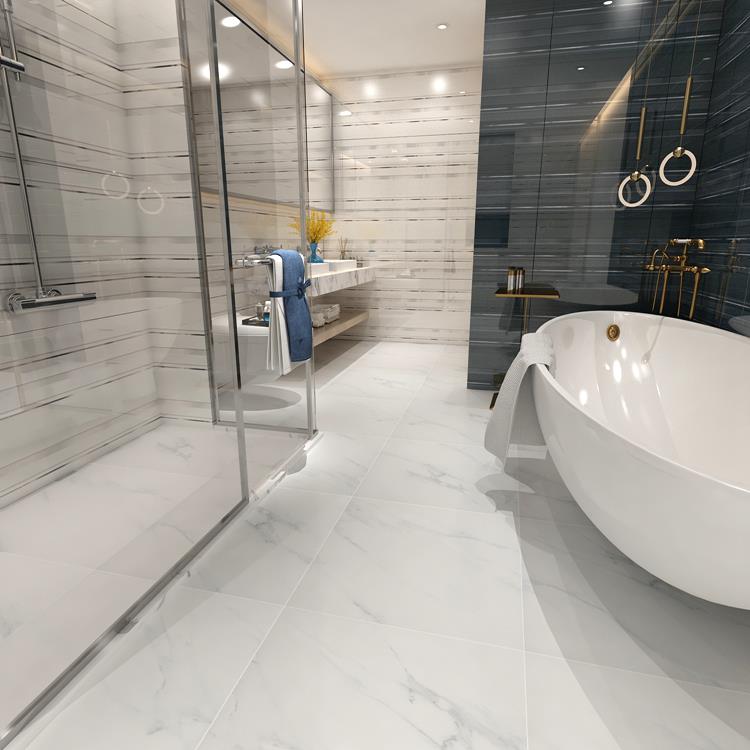
- Quarry tile
Unglazed ceramic tiles are often called quarry tiles, though they are not cut from a quarry. Colors generally run from grays to earth tones. Quarry tiles offer good slip resistance and keep water from penetrating to the subfloor, but they are porous, so they are somewhat susceptible to staining. For that reason, they need to be sealed regularly.
- Porcelain tile
Made by firing at very high temperatures, porcelain tiles are extremely strong and stain resistant. Because of their strength, they are usually thinner than standard ceramics, which may help keep a floor from being too high in relation to adjacent floors. They are available in just about any size, color, and texture. Some porcelain tiles are nearly indistinguishable from travertine, marble, and other natural stone.
- Mosaic tile
Mosaics usually come in mesh-backed 12-inch-square sheets that contain a number of individual tiles ranging in size from 1 to 4 inches. Installation can be a bit tricky. The thinset mortar must be just the right thickness and consistency, or it can either ooze out onto the top of the tiles or not stick to all of the tiles. But the sheets are easy to cut, and grouting is not difficult.
Natural Stone
Real stone has a distinguished, one-of-a-kind appeal that many people feel can’t be duplicated by glazed ceramic or porcelain products.
- Travertine and smooth granite and marble
Glossy 12-inch-square tiles made of granite are extremely moisture and stain resistant, but they can be a bit slippery. There are many possible colors and patterns that range from speckled to veined. Marble has beautiful veined patters, but because it stains easily, it must be sealed regularly. Travertine boasts wonderful earth-toned hues, but like marble, it is non stain-resistant.
- Slate
This stone is sliced rather than cut, resulting in a texture that is wavy but not rough, so it feels pleasant on the feet and is slip resistant. The least expensive slate tiles tend to be soft and prone to flaking, making them practical only on walls. Other types are quite strong but need to be sealed regularly.
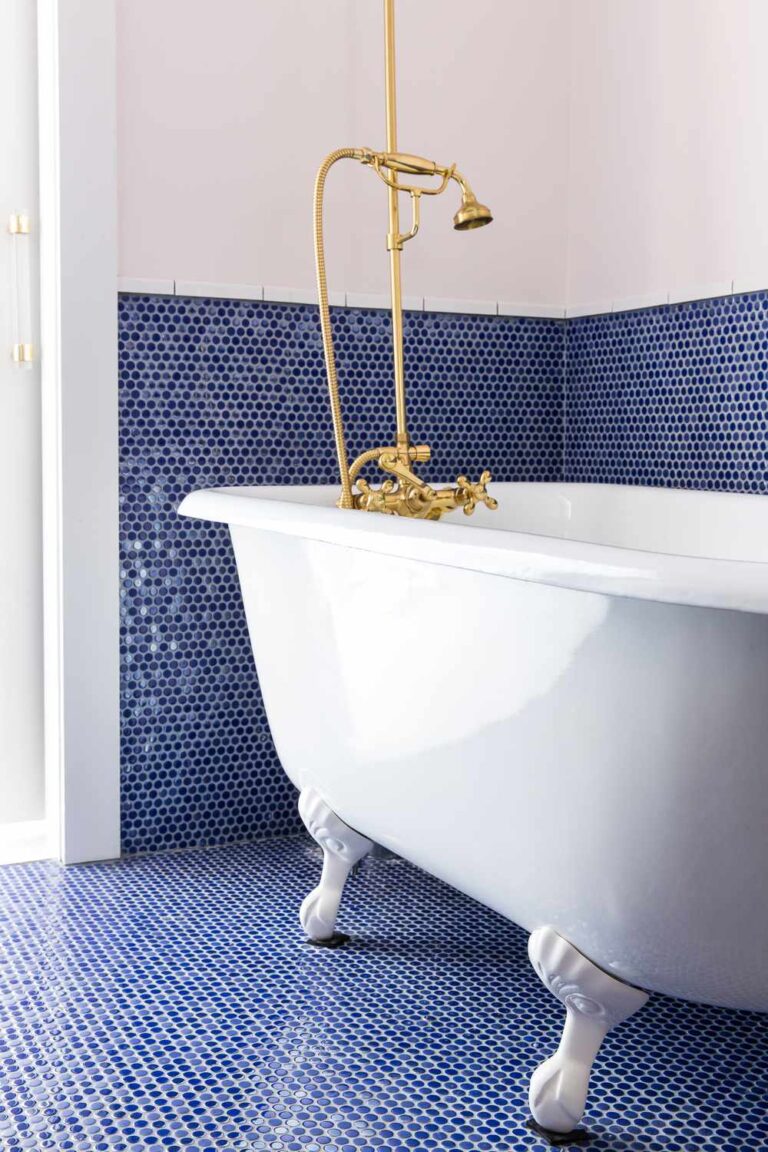
- Rough-surface stone
Tiles made of marble, granite, or other stone and described with words like “honed” or “sandblasted” have a softer appearance and may have tiny surface holes and pits. Some have rounded-over edges as well. Many of these tiles are available in decorative ensembles that include borders can accent tiles. The tiles feel comfortable underfoot, but as you may expect, you need to seal them regularly to protect them against staining.
Vinyl Tile and Sheet Flooring
Vinyl or vinyl composition tiles are commonly used in kitchens but are less popular in bathrooms. Vinyl sheet flooring, on the other hand, is often used in bathrooms. Erroneously called “linoleum” (an organic flooring material made from solidified linseed oil), vinyl sheet flooring has embossed surfaces for skid resistance. For some people vinyl has a less-than-stylish reputation, especially when they recall patterns from bygone decades that attempted to imitate ceramic tile to brickwork.
But newer vinyl sheet products are worth considering; colors and patterns have improved in quality and have an understated appeal. Because they are continuous sheets, there are no grout lines and few if any seams where water can penetrate. Vinyl is inexpensive and can be installed quickly, but take care: a single cutting mistake can compromise the job.
